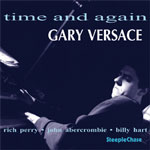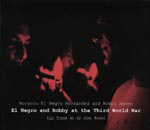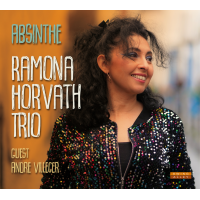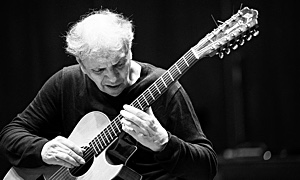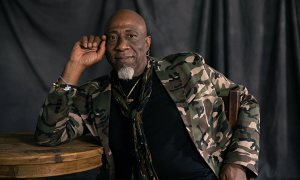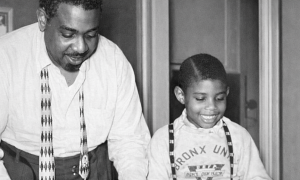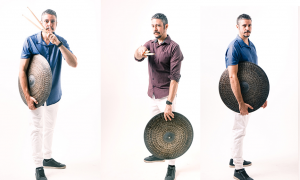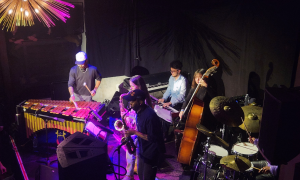Home » Jazz Articles » Interview » Russell Mills: Paintings In Sound
Russell Mills: Paintings In Sound
[It's] like considering every work as an archaeological dig...fragments are found at different levels...and a correspondence between these disparate parts unfolds, a story begins to suggest itself.
 One wonders what such diverse people as Brian Eno, Miles Davis, David Sylvian, Bill Laswell, Nine Inch Nails, Hector Zazou, Michael Brook, Roger Eno, Harold Budd, Youssou N'Dour, Nusrat Fateh Ali Khan, Wire, Penetration, Toru Takemitsu, Djivan Gasparyan, Gavin Bryars, Adiemus, David Toop and Jan Garbarek would all have in common. The answer to that is Russell Mills. Mills is a painter, designer, illustrator, video artist, stage set designer, teacher and a musician. Indeed, Mills wears many hats. As a true renaissance artist he has proven himself to be very prolific and his work has always shown him to be open to moving into new territories and collaborating with artists working in different disciplines to his own.
One wonders what such diverse people as Brian Eno, Miles Davis, David Sylvian, Bill Laswell, Nine Inch Nails, Hector Zazou, Michael Brook, Roger Eno, Harold Budd, Youssou N'Dour, Nusrat Fateh Ali Khan, Wire, Penetration, Toru Takemitsu, Djivan Gasparyan, Gavin Bryars, Adiemus, David Toop and Jan Garbarek would all have in common. The answer to that is Russell Mills. Mills is a painter, designer, illustrator, video artist, stage set designer, teacher and a musician. Indeed, Mills wears many hats. As a true renaissance artist he has proven himself to be very prolific and his work has always shown him to be open to moving into new territories and collaborating with artists working in different disciplines to his own. His paintings are a proof of what people who just download music miss out on, as his paintings are works of art that can be enjoyed on many levels. He has worked extensively in design, producing influential book covers for Samuel Beckett, Ian McEwan and Milan Kundera amongst others, and has exhibited his paintings, assemblages and collages in numerous solo and group exhibitions in locations including London, New York and Tokyo. He has also created multi-media installations with his collaborator Ian Walton in Japan, UK, Ireland, Spain and USA. Another fascinating facet of his oeuvre are his two albums Strange Familiar and Pearl & Umbra, to which many of the aforementioned artists have provided their contributions, helping him create music that transcends genre limits.
All About Jazz: Mr. Mills, you are a painter, musician, illustrator, video artist, stage set designer and teacher. What sparked your desire to work in all these different areas?
Russell Mills: There was no specific spark or overwhelmingly convincing desire to work in these areas. As a student I wasn't very clear about a specific career path, however I was always very positive about those things I didn't want to do. The main idea that fuelled my ideas was to avoid specialization and to avoid being pigeonholed. I've always been intensely curious about a myriad of ideas and experiences, artistic, cultural, historical, biological and scientific and have studiously avoided being trapped in one idiom or genre.
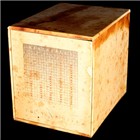 I came to work in all these supposedly diverse areas of creative expression partly by chance, in other words I was asked to work in one form or another and I accepted if the work was challenging, exciting and if I respected the people asking me to do it. These experiences usually led to other works in other diverse areas. Also all of these opportunities had to be ethically sound and if possible morally enabling. I guess that in retrospect I was very lucky and honored to meet up with and to work with and for the unique people I have done.
I came to work in all these supposedly diverse areas of creative expression partly by chance, in other words I was asked to work in one form or another and I accepted if the work was challenging, exciting and if I respected the people asking me to do it. These experiences usually led to other works in other diverse areas. Also all of these opportunities had to be ethically sound and if possible morally enabling. I guess that in retrospect I was very lucky and honored to meet up with and to work with and for the unique people I have done.
AAJ: How has each experience informed your understanding of the other? What experience from the visual arts did you take into the process of making music (and vice versa)?
RM: Essentially to all these diverse activities I think I bring the same commitment. Every involvement with these separate but interlocking activities informs and inspires my work in all other areas. Obviously the approaches to research and evolution of ideas are slightly altered by the tools required for each different discipline. As for working in the visual arts and music, well I've always felt that there was a close correspondence between the two disciplines and in their potential to move and inspire higher emotional states.
I've also always believed in the notion put forward by writer Walter Pater that "all arts aspire to the condition of music. I understand this to mean that music is the highest form of cultural expression and all the other arts try to reach similar zeniths of potential. To experience music, to be moved by it, one doesn't have to analyze it, it comes straight into one's system, avoiding the brain and goes directly either to the heart or the groin. This is ideally what I'd like visual arts to do.
AAJ: Can you point to the place where music and art intersect for you?
RM: Essentially I guess that it is when a work, whether it be visual or audio, really pulls one up, knocks one sideways. Expectations are floored and preconceptions are demolished when this happens. Specifically for me it is in devising, making and realizing multimedia site-specific installations. Installations allow a whole raft of interests to collide and in researching themes and ideas for them many tangential thoughts are encountered which lead me in interesting unexpected directions to rich sources of potential. Installations also allow one to explore the three dimensional—architecturally, sonically, visually and emotionally, and by doing so enable one to create an immersive environment—as with the best music, one is sucked inside the work entirely.
AAJ: I came across an article on the internet about Kurt Schwitters that you wrote. How has his work influenced you?
RM: It is not just his work that has inspired and informed me but it is his whole attitude to life as a creative person. He saw no distinction between his work and his life, both were conjoined, they were inseparable. I feel the same. Many of his works and more crucially, his writings about art and the collage principle are extremely visionary, suggesting forms and approaches that only now, with current technologies, are being explored. Subjectively his work is poetically beautiful and inspiring, especially if one considers the context of the times he was living in and the tragic circumstances of his life. To really explain his importance and his immense influence on me and on countless artists, writers, musicians and thinkers since his death in 1948 would require me to write a book!
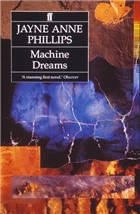 AAJ: The artwork you do is really unique in every sense. It is not only visually inspiring but one can feel the uniqueness and the depth of it. Please, explain how you work with musicians/writers to create album/book cover art. What sort of qualities do you look for before deciding to work with someone?
AAJ: The artwork you do is really unique in every sense. It is not only visually inspiring but one can feel the uniqueness and the depth of it. Please, explain how you work with musicians/writers to create album/book cover art. What sort of qualities do you look for before deciding to work with someone?
RM: If possible, if time allows it, I try to live with the music or the book I've been asked to respond to for quite a long time, in order to thoroughly digest what's at the core of the work. I also try to meet and talk with the writer or musicians involved and if that isn't physically possible I communicate by phone, e-mail or letter. I'm very conscious that whilst I want to produce something that is relevant yet oblique I must also produce a work that the author or musician is happy with, after all they have maybe spent years on this.
The cover is the frontline for the public, it is the visual interface between the richness of the music or the words and the public's potential enjoyment of it. I also undergo a period of intense reading and research into a myriad of subjects that may or may not connect and which, thankfully occasionally lead me to areas of interest that allow me to bypass the literal. Essentially I try to find the essence of the music or the book, the undertow that is the work's engine, rather than a literal reading of the obvious.
AAJ: It's easy to see that your work is not only aesthetically pleasing, but that it does convey a sense of exploration. What sort of thought goes into your work? Can you describe your creative process, how you come up with your ideas?
RM: The ideas are triggered by many initially apparently divergent ideas, which somehow collude contextually to suggest new territories of the possible. As I'm constantly reading and undertaking a lot of research towards my work, I discover countless tangential routes and ideas that trigger alternative ways of looking at the world. As you suggest, it is a kind of exploration. I'm always seeking metaphors, analogies and visual simile to bypass the obvious, to suggest rather than describe.
I believe the work should be contextually anchored, conceptually rooted and not merely gratuitous. I believe very much in William Wordsworth's imperative that nature should provide analogies for the human mind and soul; it is in observing nature's endless flux and chaotic order that I find directions that fuel my creative energies. I live in the English Lake District surrounded by hills, mountains, lakes, rivers and wildlife; every day, every minute, every second brings wondrous changes.
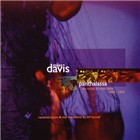 AAJ: Do you think cover art adds anything to the music when it's released?
AAJ: Do you think cover art adds anything to the music when it's released?
RM: Yes I do. When cover art is successful it adds to and complements the essential mood of the CD and also conveys something inexplicable about the music itself. I also believe that people, buyers of CDs relate very strongly to cover art and design. The same applies with book covers and in fact most other items that are made commercially available—cultural, practical or decorative. Good design and a thoughtful approach to imagery can convey much to a perceiver that words alone cannot do. As I mentioned above the cover art and design is the frontline to a potential audience, if it doesn't appeal, seduce or arrest then it doesn't succeed.
AAJ: The dedication to your art is truly impressive and beside book/CD covers you also work on art installations. Can you tell me a bit more about this type of work? How did you get interested in sound art?
RM: Music and sound have always been central in my life since my earliest recollections. Both my father and elder brother played in bands, my father in a kind of jazz combo and my brother in an Elvis-inspired rock and roll band, and music was always playing in the house. When at school I had percussion tutoring and played drums in a band that attempted to do cover versions of impossibly difficult tracks by Hendrix and Captain Beefheart—my two favourite artists then as now. Punk exploded when I was at the Royal College of Art in London and I found myself right at the centre of it. I went to see bands three or four times a week. There was a symbiotic shift in cultural values at the time, which corresponded exactly with my own thoughts and aspirations. I found the whole period liberating. One of my favourite bands to emerge from Punk was Wire.
Over a short period I got to know them personally and through our discussions we began conceiving of ways to subvert the usual concert experience by considering a whole event as being in real time and open to deliberate change. We created several site specific recording installations, performances and evolving interventions, which combined sound with performance and sculptural objects. The first was in 1980 called Kluba Cupol. Through these works I became increasingly interested in what has become known as installation and in the potential it offers to work in three-dimensional space with elements that use and affect all the senses—sound, vision, smell, touch and taste. Installation, like all the arts, allows me to experiment with situations that would not be feasible or desirable in our everyday. These are not obliged to reality and yet can and do relate to the real. They are conceived to lift people's emotional antennae, to produce or suggest other possible futures.
AAJ: How do you look back at Ember Glance, the installation you did with David Sylvian?  RM: This was a hugely ambitious installation, which allowed me to experiment with a vast artillery of lighting and sound technologies. Thankfully the Japanese commissioners of the work were totally supportive of our ideas and were incredibly generous financially in enabling us to realize such a large piece. I learnt a lot from it and am still immensely proud of it.
RM: This was a hugely ambitious installation, which allowed me to experiment with a vast artillery of lighting and sound technologies. Thankfully the Japanese commissioners of the work were totally supportive of our ideas and were incredibly generous financially in enabling us to realize such a large piece. I learnt a lot from it and am still immensely proud of it.
AAJ: Both Strange Familiar and Pearl and Umbra are very intricate records. Was it a challenge to make all those influences, sounds and textures fit together? Most of the pieces on both records merge truly diverse musical ideas in a very unexpected and surprising way. What was your philosophy when you approached these ostensibly disparate ideas?
RM: In my visual work, in the way I think and in my approach to making music, I tend towards a process which could be described as a kind of epigenetics—working in layers, conceptually and physically. In one sense this is like considering every work as an archaeological dig into the unknown. Fragments are found at different levels of investigation; alone they are mysterious, possibly unidentifiable and maybe they mean very little. Other shards of evidence are unearthed and a correspondence between these disparate parts unfolds, a story begins to suggest itself.
It's my job to make some kind of sense out of these strange juxtapositions. Another approach I take is to set up processes of action over which I have no real control. Using known elements, individual sound samples say, I will deliberately throw opposites together to see what the results might be. I need to be surprised by the work and this tactic always reveals interesting and fruitful possibilities. Also my subjective taste enters into this creative process.
AAJ: Please describe how you chose your collaborators on both of your albums and how have their contributions helped shape the music.  RM: Most of those who have contributed to the Undark albums are musicians who I have worked with or for in one way or another. I have either done covers for them or created sets for them. Some I've met through other musicians, some are friends who happen to play instruments or have an ability to make interesting sounds. They are not necessarily professional musicians, many of them being students I've taught or friends I've studied with. In this process of exchange, friendships and mutual respect have grown. Some others I have actively sought out because I particularly like the way they play or sing or I like the way they approach sound.
RM: Most of those who have contributed to the Undark albums are musicians who I have worked with or for in one way or another. I have either done covers for them or created sets for them. Some I've met through other musicians, some are friends who happen to play instruments or have an ability to make interesting sounds. They are not necessarily professional musicians, many of them being students I've taught or friends I've studied with. In this process of exchange, friendships and mutual respect have grown. Some others I have actively sought out because I particularly like the way they play or sing or I like the way they approach sound.
AAJ: Is there a philosophy you adhere to when making music? To me your main instrument seems to be the recording studio.
RM: There's no particular philosophy beyond a vain attempt to emulate the aspiration expressed by the poet Robert Frost—"No surprising the writer, no surprising the reader.
AAJ: Have you considered extending the skills you used in making those albums to create soundtrack work?
RM: Many people have flatteringly said that much of what I do for installation soundworks or that Undark does, would be perfectly used in soundtrack or sound design for films or TV. I would naturally be very interested in working in these territories or having extant pieces used in them but so far have not been approached by anyone to do so. Ever the optimist, I live in hope...
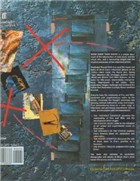 AAJ: You've been collaborating with Brian Eno for almost 20 years. One of your earlier works More Dark Than Shark was inspired by his work. What drew you to his work?
AAJ: You've been collaborating with Brian Eno for almost 20 years. One of your earlier works More Dark Than Shark was inspired by his work. What drew you to his work?
RM Many aspects of his work, his approach and his ceaselessly curious mind have endeared me to his music and his ideas since I first saw him performing with Roxy Music. To me he seemed like the real spark of imaginative experimentation in the group and in interviews I recognized a kindred spirit, an intellect who enjoyed high and low culture and who came at ideas from interesting angles. Since our first meeting in 1975 we have worked together on many projects and we still communicate and exchange ideas.
Despite his incredibly heavy workload, he is very generous with his time and support and has one of the liveliest and most interesting minds I've ever encountered. Like Schwitters, he is that rare artist who is not afraid to actually pursue his own ideas, no matter what the prevailing fashion or style. This is a rare quality in today's "lowest common denominator media landscape in which celebrity and shallow notoriety is elevated and genuine talent, commitment, innovation and merit is ignored or ridiculed.
AAJ: You had the opportunity to work with David Toop both on his books and albums and you took part in Sonic Boom, that was curated by him. What impression have his works such as Ocean of Sound or Haunted Weather made on you?
RM: David has this incredible ability to weave really fascinating facts into stories that imperceptibly slide between fiction and fact. His knowledge and understanding of music, historically, socially, culturally and emotionally, is extremely broad and his curiosity and enthusiasm infective. His writing in his influential books and his numerous insightful magazine articles gently and deceptively suck you into new worlds.  I think that his time at art school has shaped his mind into a particularly unique engine as it has with many musicians I know who also started out in an English art school. The English art schools of the '60s and early '70s were hotbeds of experimentation and creative rebellion which manifested itself in totally new ways of looking at the world and more specifically culture and its place and potential in the increasingly commercial world.
I think that his time at art school has shaped his mind into a particularly unique engine as it has with many musicians I know who also started out in an English art school. The English art schools of the '60s and early '70s were hotbeds of experimentation and creative rebellion which manifested itself in totally new ways of looking at the world and more specifically culture and its place and potential in the increasingly commercial world.
AAJ: At the moment you are working on your next release. Does the direction of the new album reflect your listening tastes?
RM: I'm not sure that my recent listening choices have influenced the direction of the current Undark recording project; this is hard for me to determine at this point. There have been many records and tracks that have excited me but I'm not interested in emulating them. I want the tracks that we (Tom Smyth, Mike Fearon and I) are working on to be ours, unlike anything else but themselves. However I suspect that there will be critics out there who will dissect every snare snap and every minimal bleep and declare it to be influenced by another record!
For your interest my listening over the past year has consisted mostly of Arvo Pärt, Martin Grech, Björk, Nine Inch Nails, Jeff Buckley, Nick Drake, Eno, Sylvian abd Biosphere, amongst many others. However I think that my reading matter inspires more ideas than my listening tastes. I've been reading the prose and poetry of Seamus Heaney, Tony Harrison, and Robin Robertson and the novels of W.G. Sebald, Iain Sinclair, Flann O'Brian and Jeanette Winterson as well as essays by Andrei Tarkovsky, John Berger, Elias Canetti, Susan Sontag, Gaston Bachelard, and texts by Samuel Beckett. Other sources of inspiration are books on clouds, biology, natural history and anthropology and my twelve year-old son Sam's Beano comics. Also, as I mentioned before, nature is probably the most significant mentor I have.
AAJ: What else are you working on currently or in the near future?
RM: I have a new installation called "Hold" opening at the Palazzo delle Papesse Centre for Contemporary Art in Siena on October 9. This is a collaboration with Italian video artist Petulia Mattioli, which also includes a new sound piece mixed by Eraldo Bernocchi with contributions from Bill Laswell, Harold Budd, the Ethiopian vocalist Gigi and from Mike Fearon and myself. Also with my usual collaborator Ian Walton, I'm devising a new installation for the Silo Espaço Cultural, a huge cylindrical building in Oporto for March 2005. I have lecturing commitments to the Royal College of Art in London where I am a Visiting Tutor and to Glasgow School of Art in Scotland where I am Visiting Professor.
Meanwhile I continue painting, writing and quietly hoping that I find some rich and sympathetic buyers for my efforts. I also dream of being offered more interesting, challenging and highly lucrative commissions for film music for the likes of Terence Mallick, Martin Scorsese, Werner Herzog, and if he was still alive, Andrei Tarkovsky; album covers for Arvo Pärt, Björk, Scott Walker, Captain Beefheart and countless other greats. I'd also love some commissions for book covers for Seamus Heaney, Jeanette Winterson, and all the other writers I mentioned earlier. And finally I guess that I'd love to be invited to create more installations in stunningly beautiful parts of the world.
AAJ: You have worked with so many people with different backgrounds. What are some of the misconceptions about what you do and who you work with? 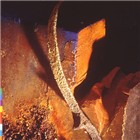 RM: I work in multimedia site-specific installation, painting and assemblage, collage, design for print and for stage, and with sound and film. The mediums and the tools employed are used appropriately, contextually and conceptually. All of these activities feed and inspire one another. I see no distinction between them other than the tools used, which are merely a means to an end; the work is not about itself nor is it about the tools used in its making.
RM: I work in multimedia site-specific installation, painting and assemblage, collage, design for print and for stage, and with sound and film. The mediums and the tools employed are used appropriately, contextually and conceptually. All of these activities feed and inspire one another. I see no distinction between them other than the tools used, which are merely a means to an end; the work is not about itself nor is it about the tools used in its making.
In England more so than elsewhere, the most commonly held response I receive is more concerned with the multi-disciplinarian approach I have rather than the work itself. The fact that I work in diverse mediums in and across multiple genres and barriers is generally frowned upon. To work across so many boundaries is seen as a dissipation of one's talents or energies and is therefore considered to be suspicious. The term "amateur" or "dabbler" tends to be aimed at people who do more than one thing. I believe this to be a relatively recent and particularly English trait. From the Renaissance of Leonardo da Vinci up until several decades after the Second World War with artists such as Duchamp and Schwitters, artists have expressed themselves in a myriad of areas from painting to poster design, from sculpture to furniture.
Artists applied themselves to whatever excited their curiosity. More recently however there has been a perverse reversal in this ethos. Pressure from critics, teachers and the institutionalized bureaucracy within art colleges for artists to specialize, to become known for one way of working, for polishing one style, has become the accepted norm. Conversely in Europe, America and Japan I do not perceive a problem with people's perceptions of artists who work in many areas of creativity, in fact this diversity is celebrated, supported and expected, as it was in the Renaissance.
AAJ: Ian Walton is someone that you've been working with for a long time. What has your relationship with Ian Walton, both personal and professional, been like?
RM: I've known Ian since 1969. We met at Canterbury College of Art where Ian was in his first year of a Fine Art course and I was in my Foundation Year, one year below him. He is essentially a painter through and through, full of conviction and commitment. His work is process driven, tactile and organic. As a friend we share many common ideals, aspirations, inspirations and approaches to art, we also enjoy word play and laughter.
Our tastes coincide on just about everything. In our collaborative work we operate almost as two sides of a coin, with my role as being to research and formulate the ideas and Ian's as a barometer or a force that grounds the ideas. If I propose ideas that are too highly wrought with intellectual weight, Ian will question them so as to oblige us both to strip everything down to an essence. Incrementally the ideas ricochet between us until something emerges that as individuals we would never have thought of. There is a strange chemistry between us, which doesn't rely on endless dialogues, we understand each other without the need for verbal exchange like a sixth sense.
AAJ: What are the things that you look for in your art? I find it both very intriguing and seductive at the same time.
RM: I think I aspire to either an art that seduces or arrests, reliant on inspiring questions rather than shock tactics. I'm for an approach that is subtle, nuanced and oblique rather than didactic or propagandist, an approach that acts like perfume, which drifts around corners, slips under doors and lingers, its effect takes time to unfold. 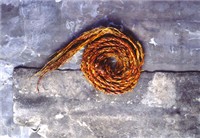 AAJ: Who are some of the contemporary artists that you admire?
AAJ: Who are some of the contemporary artists that you admire?
RM: Visual artists that inspire me are many and varied. What bonds them all is their absolute commitment and their strong sense of moral responsibility which they address in their work. These are some that I admire immensely—Anselm Kiefer, Antoni Tapies, Olafur Eliasson, Cornelia Parker, Bruce Nauman and Brian Catling. There are also many writers, novelists, poets and theorists who I consider to be artists and who inspire me greatly. These include John Berger, Susan Sontag, Robert Hughes, Seamus Heaney, Robin Robertson, Anne Michaels, WG Sebald, Gaston Bachelard, E Annie Proulx, Jeanette Winterson, Samuel Beckett, Ted Hughes, TS Eliot, Osip Mandelstam, Tony Harrison, Zbigniew Herbert, Paul Celan and Czeslaw Milosz, amongst many others.
AAJ: What other interests do you have outside of art and music that soothe your soul?
RM: Seeing sheds and reading about them turns my crank. For me the shed, particularly in the UK is a symbol of independence, individuality and innovation. Smoking Gitanes filtered cigarettes. Evenings in my local pub are a leveling experience where I enjoy mixing with a diverse group of people of all ages, genders, backgrounds and occupations. In such convivial and generally relaxed surroundings everyone is obliged to find a common language and the conversations are always lively and genial.
The pub is a very democratic institution. Rydal, just outside Ambleside, is where I live and it is paramount in my life. The road I live on is not only unbelievably beautiful but is remarkably rich in cultural history. The houses along its winding course, which accompanies the Rothay River from Rydal Water to Lake Windermere, have been occupied by some of the most influential and radical writers and thinkers that England has produced. Former occupants include Thomas De Quincey, Thomas and Matthew Arnold, the US President Woodrow Wilson and William Wordsworth's agent.
The house I live in was Wordsworth's favourite daughter Dora's home and it was visited by Charlotte Bronte; a later occupant also entertained General Montgomery here. Kurt Schwitters, Tennyson, Coleridge, Keats and Wordsworth all walked along this route between Grasmere and Ambleside. Walking with my two dogs anywhere around here, by the River Rothay, up on Loughrigg Fell or around Rydal Water, always gives me great pleasure whatever the weather. This environment and the ceaselessly changing landscape feeds me with ideas and "soothes my soul" enormously; and being in it re-charges my batteries.
Visit Russell Mills on the web.
Selected Discography
Russell Mills/Mike Fearon, Cleave/Soft Bullets (Shed Recordings, 2002)
Russell Mills/Ian Walton/Paul Farley, Republic of Thorns (Shed Recordings, 2001)
Russell Mills/Undark, Pearl+Umbra (Instinct, 1999)
Russell Mills/Undark, Strange/Famuiliar (Instinct, 1996)
Russell Mills/Ian Walton, Measured in Shadows (Shed Recordings, 1995)
Tags
PREVIOUS / NEXT
Support All About Jazz
 All About Jazz has been a pillar of jazz since 1995, championing it as an art form and, more importantly, supporting the musicians who make it. Our enduring commitment has made "AAJ" one of the most culturally important websites of its kind, read by hundreds of thousands of fans, musicians and industry figures every month.
All About Jazz has been a pillar of jazz since 1995, championing it as an art form and, more importantly, supporting the musicians who make it. Our enduring commitment has made "AAJ" one of the most culturally important websites of its kind, read by hundreds of thousands of fans, musicians and industry figures every month.


